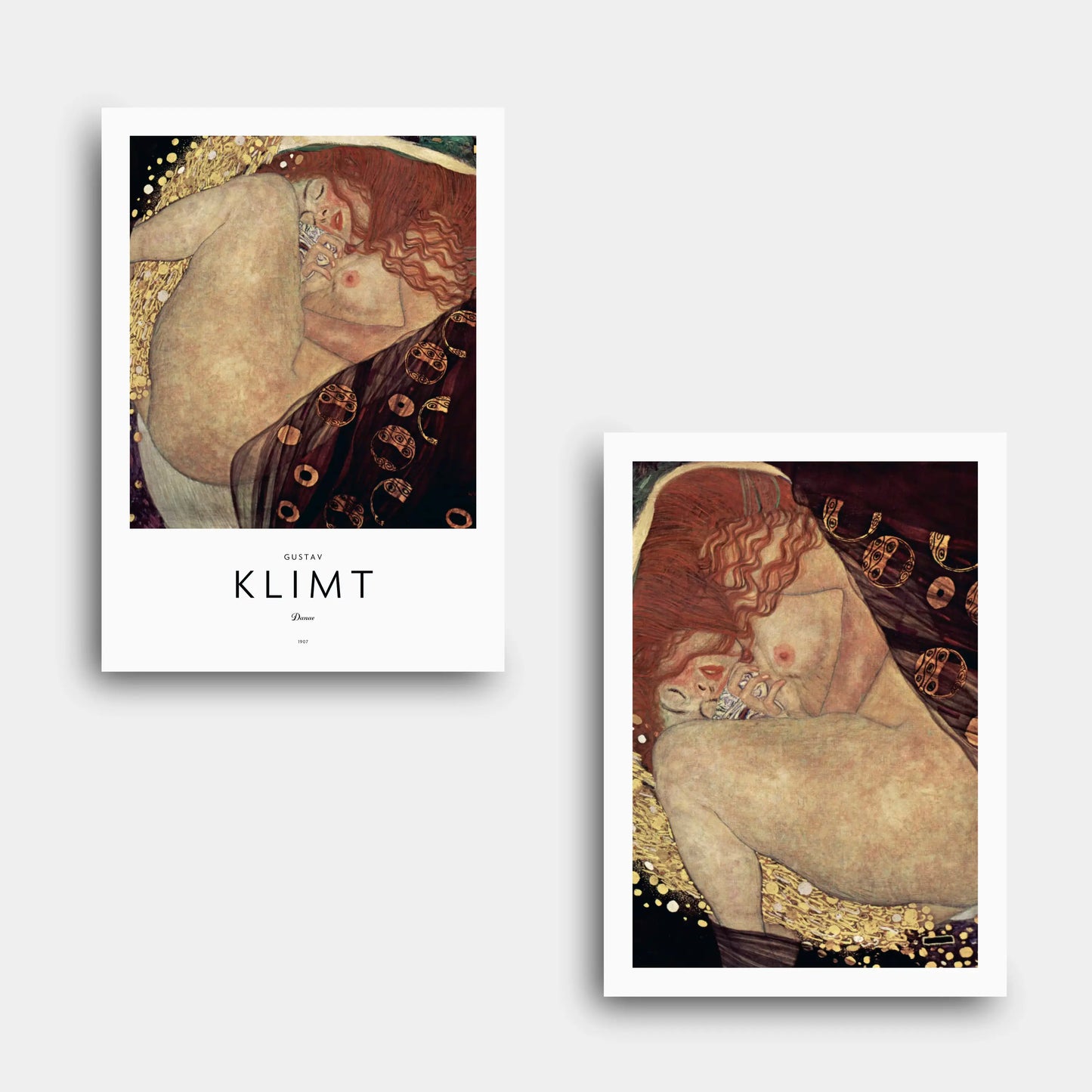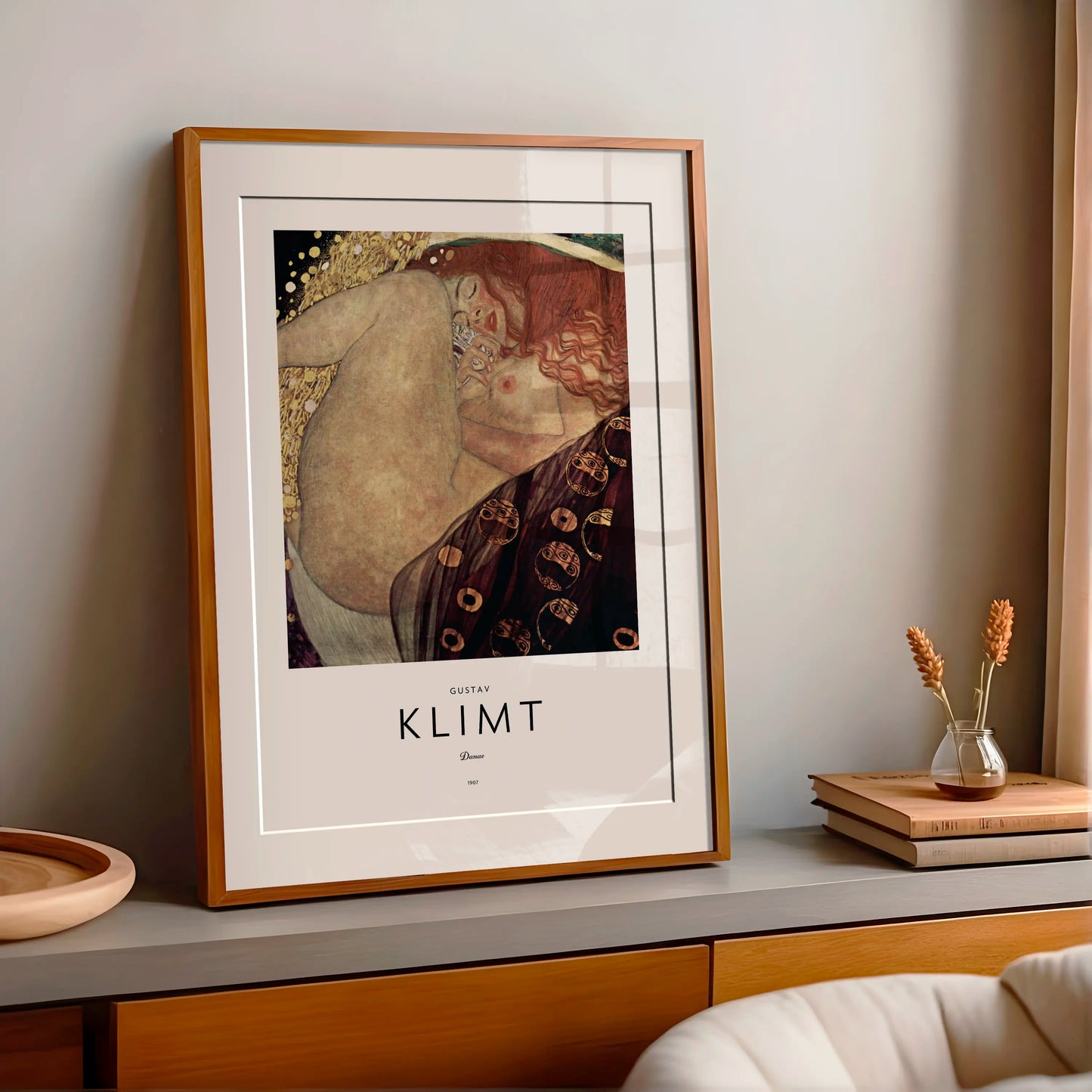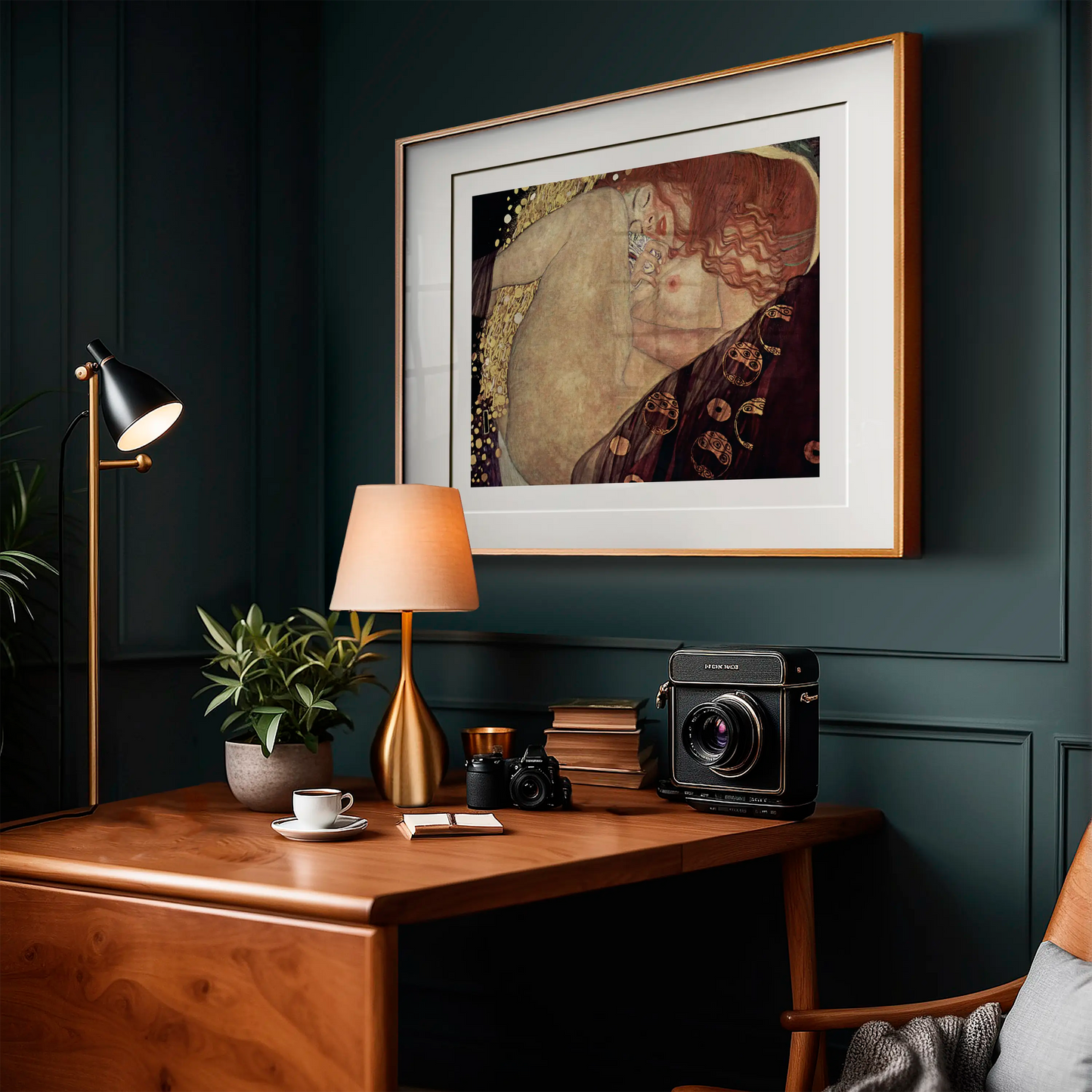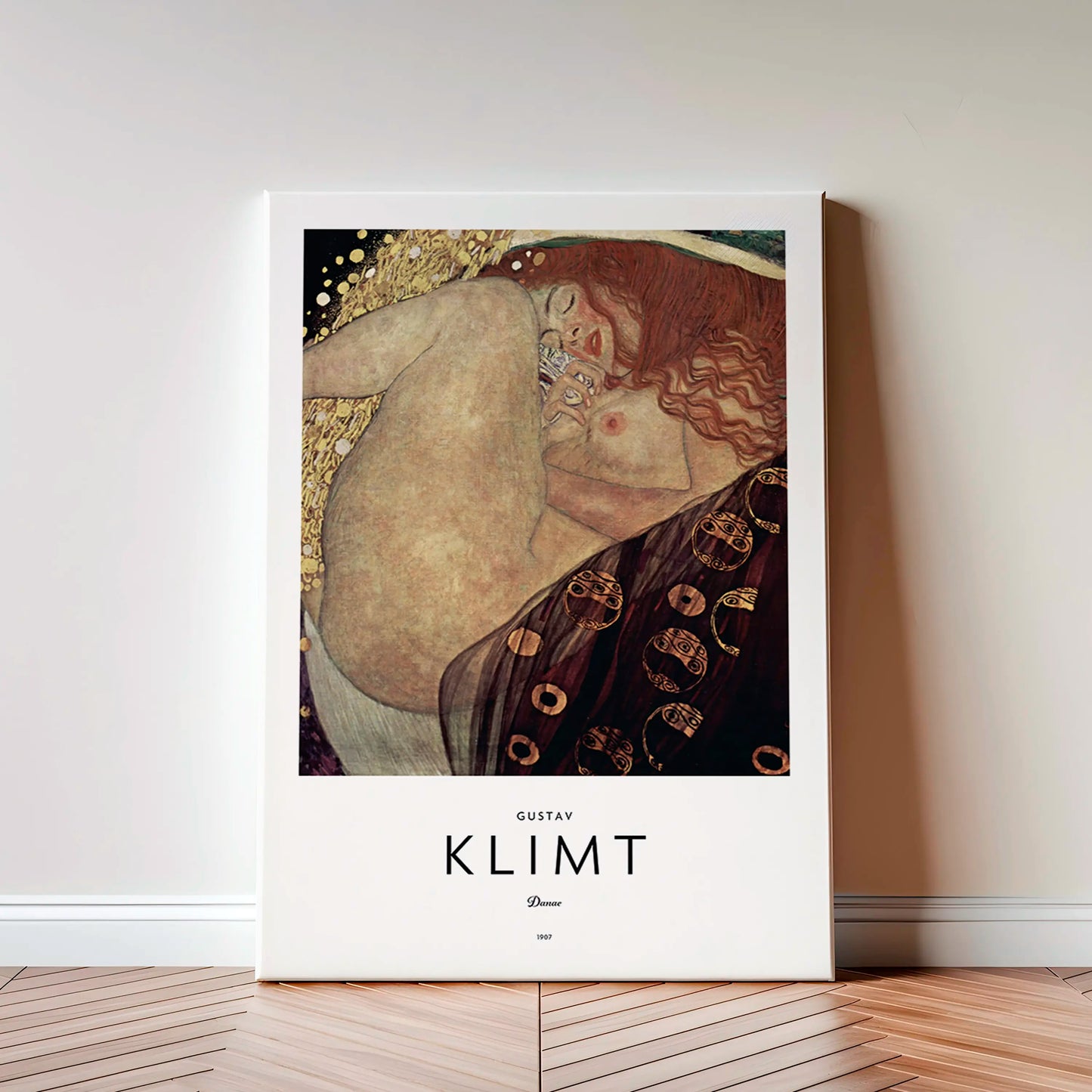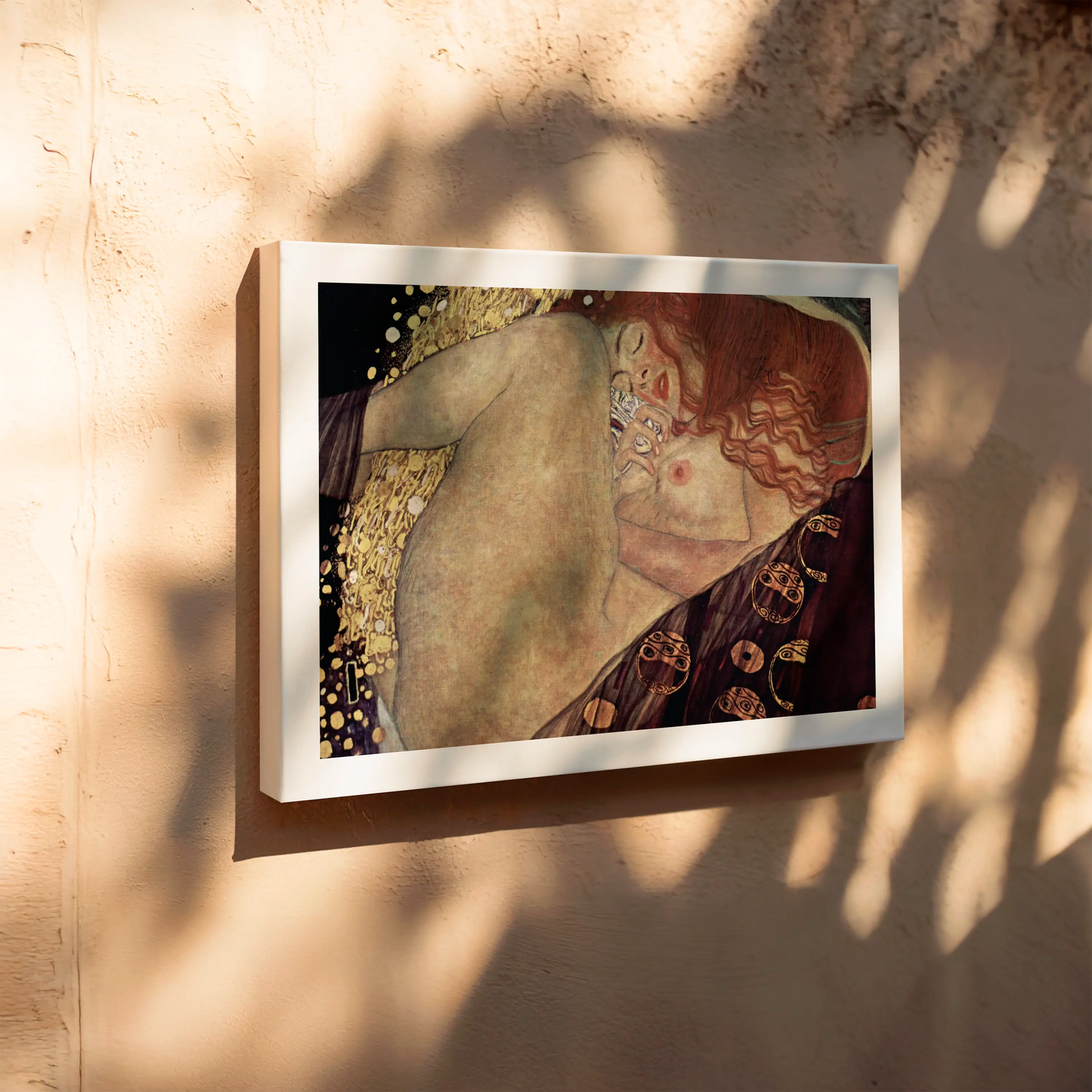Gustav Klimt - Danae (1907) - Digital File N176
Gustav Klimt - Danae (1907) - Digital File N176
Couldn't load pickup availability
Share
Paper Poster | Canvas Print | Digital File
1. Historical and Artistic Context
Gustav Klimt painted “Danaë” in 1907 during his celebrated Golden Phase, a period defined by the integration of classical mythology, erotic themes, and rich ornamentation with gold leaf. At this time, Klimt was one of the leading figures of the Vienna Secession, a movement that sought to break away from traditional academic art. “Danaë” fits perfectly into the Symbolist ethos of the era, reflecting Vienna’s fascination with sensuality, mythology, and the unconscious. The myth of Danaë, daughter of Acrisius, was a popular subject for Symbolist painters, but Klimt transformed it into one of the most intimate and erotic works of early 20th-century art.
2. Technical and Stylistic Analysis
The painting depicts a nude Danaë curled in a fetal position, enveloped in a deep purple veil that highlights her royal heritage. Klimt uses a tight framing to focus attention on her body, particularly her thighs and torso, which dominate the canvas. The background is filled with decorative golden patterns, abstracted and flattened, contrasting with the naturalism of her skin and hair. Klimt’s stylistic hallmark is evident here: the combination of ornamental two-dimensional patterns with softly modeled, sensual figures. The result is both intimate and monumental, as the female body becomes a sacred icon set within a shimmering decorative field.
3. Symbolism and Interpretation
“Danaë” is inspired by the Greek myth in which Zeus impregnates her by transforming into a shower of golden rain. Klimt represents this moment with golden particles cascading between her legs, making the sexual symbolism explicit. Her closed eyes, parted lips, and the positioning of her hand suggest an experience of ecstasy and divine union. Beyond myth, the painting is a metaphor for creation, fertility, and transcendence. The golden shapes have been interpreted as symbols of sperm and ova, visually merging science and myth. In Klimt’s vision, Danaë embodies both the mortal and divine, representing the fusion of sensuality with cosmic destiny.
4. Technique and Materials
Klimt employed oil on canvas with applications of gold and silver leaf to enhance the painting’s luminous effect. The surface alternates between matte paint and shimmering metallics, creating a rich interplay of textures. The skin is rendered with delicate shading and warm tones, while the background is almost tapestry-like, filled with abstract geometric shapes. Klimt’s trip to Ravenna in 1903, where he studied Byzantine mosaics, heavily influenced his technique, and “Danaë” shows this synthesis of mosaic-inspired flatness with sensuous figuration. The technical mastery highlights Klimt’s ability to merge painting with decorative art.
5. Cultural Impact
“Danaë” became an important reference for erotic art in early modernism. The work influenced Egon Schiele, who painted his own version of Danaë in 1909, directly inspired by Klimt’s composition. The painting exemplifies Vienna’s cultural atmosphere at the time, marked by explorations of psychology, sexuality, and myth. Today, “Danaë” is frequently reproduced in books, exhibitions, and discussions of fin-de-siècle art, symbolizing the boldness of Klimt’s Golden Phase and his ability to blend eroticism with spiritual and artistic grandeur.
6. Critical Reception and Scholarly Interpretations
Upon its creation, Klimt’s eroticism was often met with controversy. Critics in Vienna considered his depictions of female sexuality provocative, if not scandalous. However, modern scholarship views “Danaë” as a masterpiece of Symbolism, balancing sensuality with mythological depth. Psychoanalytic interpretations connect the painting with Vienna’s intellectual climate, especially Freud’s theories of sexuality and the unconscious. Feminist critiques highlight both the empowering aspect of representing female pleasure and the objectification inherent in Klimt’s eroticism. Overall, the work is now celebrated as one of Klimt’s finest allegories of divine love and human passion.
7. Museum, Provenance and Exhibition History
“Danaë” was initially exhibited at Galerie Würthle in Vienna and later became part of the private collection of Austrian publisher Hans Dichand. Today, it remains in the Dichand family’s collection but is frequently loaned to the Leopold Museum in Vienna for exhibitions. Although privately owned, it is considered one of Klimt’s most important works and has been included in major retrospectives dedicated to Viennese modernism and Symbolism.
8. Interesting Facts
1. Painted during Klimt’s Golden Phase, a period of intense use of gold leaf.
2. The canvas is relatively small, measuring just 77 × 83 cm.
3. Danaë’s purple veil symbolizes her royal lineage.
4. The golden shower is depicted as coins and abstract forms, evoking fertility.
5. Nearly a quarter of the canvas is occupied by her thighs, emphasizing eroticism.
6. The work was once part of Galerie Würthle until 1995.
7. The biological symbolism has been linked to sperm and ova.
8. Egon Schiele created a homage to Klimt’s “Danaë” in 1909.
9. Klimt’s trip to Ravenna inspired the Byzantine aesthetic seen here.
10. The painting exemplifies Symbolism’s focus on myth, love, and transcendence.
9. Conclusion
Gustav Klimt’s “Danaë” (1907) is a masterpiece that unites myth, eroticism, and decorative opulence into a single iconic image. By reimagining an ancient myth through the lens of Symbolism, Klimt produced a work that is both sensual and spiritual, intimate and universal. Its use of gold leaf, intricate symbolism, and daring portrayal of female sexuality make it a cornerstone of early modern art. Today, “Danaë” remains one of Klimt’s most celebrated works, embodying the richness and complexity of Viennese fin-de-siècle culture and securing its place as a timeless icon of erotic mythological painting.
